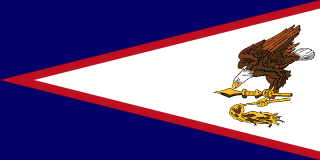Country Overview
Explore the strategic ports and maritime infrastructure of american samoa
Complete Maritime Guide on American Samoa
Geography and Maritime Conditions of American Samoa
American Samoa is an unincorporated territory of the United States located in the South Pacific Ocean, approximately 2,600 kilometers northeast of New Zealand. Comprising five main islands and several atolls, this island territory offers notable geographic diversity with lagoons, coral reefs, and deep areas suitable for various maritime activities. The complexity of its coastal waters requires a good understanding of weather conditions and marine currents for safe navigation. The climate conditions are tropical, with a wet season likely to strongly influence navigation and port operations. The prevailing winds and underwater topography play a crucial role in planning maritime routes around these islands. These factors make American Samoa a point of interest for navigation, commercial fishing, and marine environmental studies.
Ports, Economic Activities and Maritime Regulations
The main port of American Samoa is Pago Pago, located on the island of Tutuila, which is an exceptionally sheltered natural harbor. Pago Pago is a key stopover for maritime transport in the South Pacific, with infrastructure adapted for cargo ships and fishing vessels. Maritime economic activity is dominated by fishing, notably tuna, a major resource for the local economy. The presence of designated fishing zones and sustainable management of marine resources are regulated to preserve the ecosystem. In addition, the territory enforces U.S. federal regulations regarding maritime safety, pollution, and navigation, strengthening security in its waters. Vessels must comply with strict port formalities, including health inspections and invasive species prevention. This meticulous regulation ensures harmonious maritime development between economic exploitation and environmental conservation.
Future Prospects and Strategic Importance
American Samoa also plays a strategic role in maritime surveillance and regional security in the Pacific, particularly due to its proximity to several major international shipping routes. The territory positions itself as a potential hub for logistics services, oceanographic research, and sustainable marine activities such as aquaculture. Improvement of port infrastructure and increased berth capacity are developments planned to boost the local economy and attract more maritime traffic. Finally, regional cooperation in maritime security and fisheries protection represent crucial areas for the future of American Samoa, contributing to the economic and environmental stability of this Pacific island region.